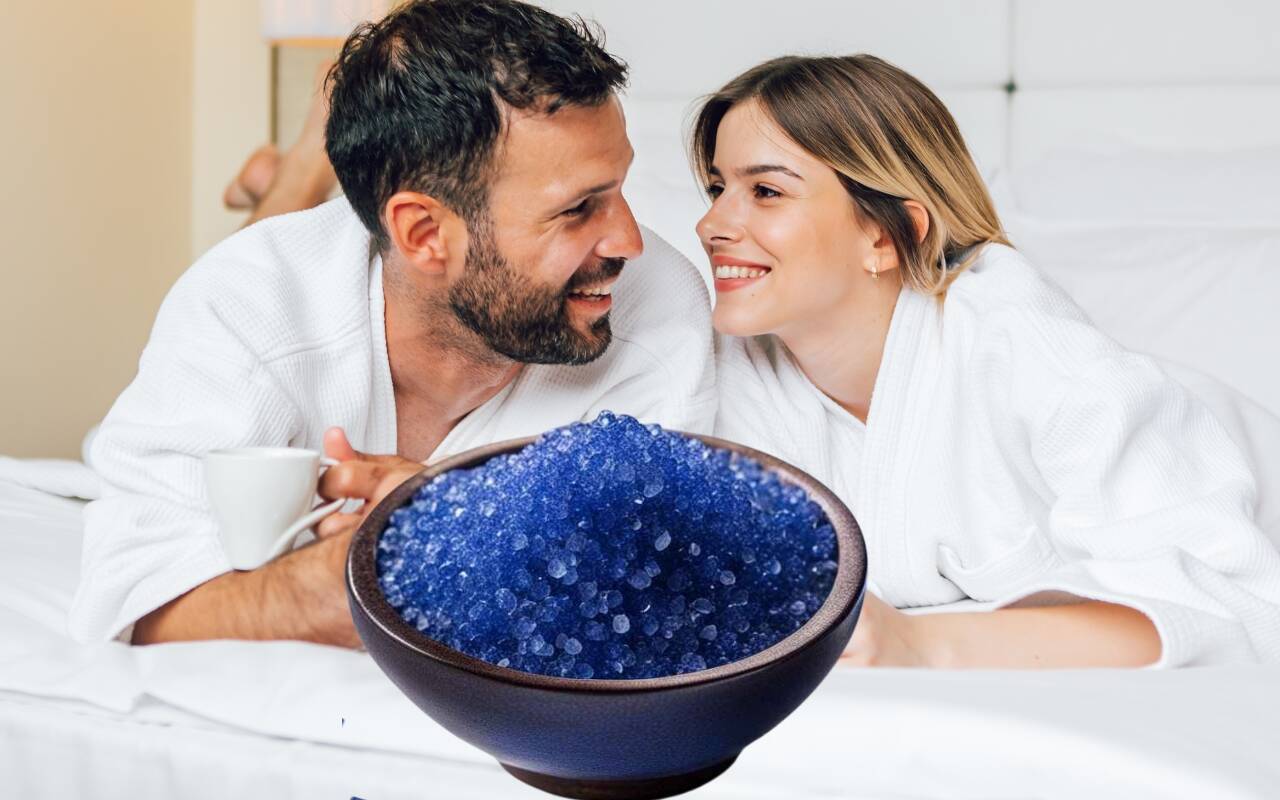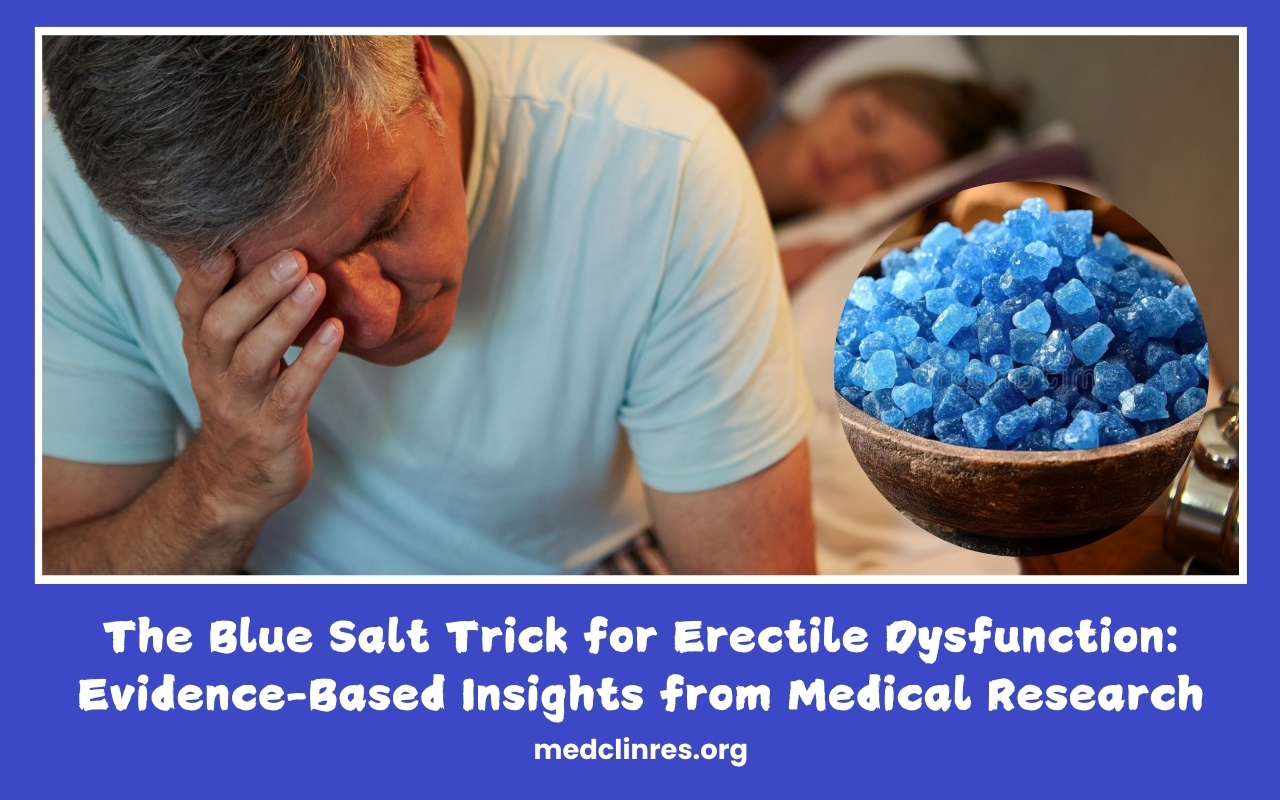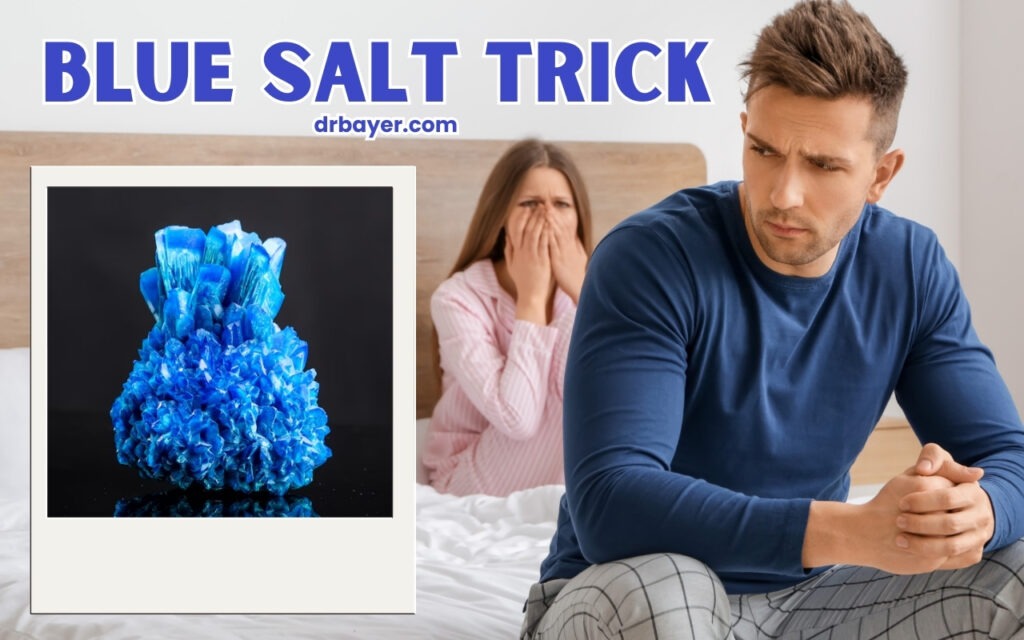Have you ever heard about the blue salt trick and wondered if it’s legit? It’s been buzzing around social media, with people claiming it can save your life in an emergency. But is there more to the story? Let’s dive right into it and find out whether this trick is worth your time—or just another internet hoax.
Imagine this: you’re out camping in the wilderness, miles away from civilization, and suddenly your water supply starts to run low. What do you do? Well, some folks on the internet claim that a simple pinch of blue salt can purify contaminated water and make it safe to drink. Sounds too good to be true, right? We’ll get to the bottom of this mystery in just a sec.
Before we jump into the nitty-gritty details, let’s set the record straight. The blue salt trick has sparked a lot of debate among survival enthusiasts, scientists, and everyday people who are just trying to figure out what works and what doesn’t. Stick around, because by the end of this article, you’ll know exactly whether this trick is worth trying—or if it’s better left untouched.
Read also:Bronson Reed The Powerhouse Of Wrestling In 2025
What Exactly Is the Blue Salt Trick?
The blue salt trick refers to the idea of using copper sulfate, a chemical compound that’s often blue in color, to purify water. Supporters of this method claim that adding a small amount of copper sulfate to contaminated water can kill harmful bacteria and viruses, making the water safe to drink. But here’s the catch: not all blue salts are created equal, and not all of them are safe for human consumption.
Blue salt, or copper sulfate, is commonly used in agriculture, swimming pools, and even some industrial processes. While it does have antimicrobial properties, the concentration and purity of the compound matter a great deal. Drinking water treated with copper sulfate can be dangerous if the dosage isn’t carefully controlled.
How Does Copper Sulfate Purify Water?
Now, here’s where things get interesting. Copper sulfate works by releasing copper ions into the water, which can disrupt the cell membranes of bacteria and viruses. This process can effectively kill harmful microorganisms, making the water safer to drink. However, the key word here is "effectively." It’s not a foolproof solution, and there are risks involved.
For instance, if the concentration of copper sulfate is too high, it can cause serious health issues, including nausea, vomiting, and even liver damage. On the flip side, if the concentration is too low, the water might not be fully purified, leaving you vulnerable to waterborne diseases.
Does the Blue Salt Trick Actually Work?
This is the million-dollar question, folks. Does the blue salt trick really work, or is it just a myth perpetuated by well-meaning but misguided individuals on the internet? Let’s break it down.
According to scientific studies, copper sulfate can indeed purify water to some extent. Researchers have found that it can reduce the levels of harmful bacteria and viruses in water, making it safer to drink. However, the effectiveness of this method depends on several factors, including the quality of the water, the concentration of copper sulfate, and the duration of treatment.
Read also:Unveiling The Story The Pioneer Woman Ladd Drummond Ndash The Man Behind The Brand
That said, there are better, safer, and more reliable methods of water purification available. Boiling water, using water purification tablets, or investing in a portable water filter are all excellent alternatives that don’t come with the same risks as the blue salt trick.
Why You Should Be Cautious
While the blue salt trick might sound like a quick fix, it’s important to exercise caution. Copper sulfate is a powerful chemical that can be toxic if ingested in large quantities. Even small amounts can cause gastrointestinal distress, and long-term exposure can lead to more serious health issues.
Additionally, not all blue salts are safe for human use. Some products marketed as "blue salt" may contain impurities or additives that could be harmful if consumed. Always check the label and make sure you’re using a product that’s specifically designed for water treatment.
Is the Blue Salt Trick Safe?
Let’s talk about safety, because this is a big deal. While copper sulfate is widely used in various industries, its use in water purification is controversial. The World Health Organization (WHO) has set guidelines for the maximum allowable concentration of copper in drinking water, and exceeding these limits can be dangerous.
For example, the WHO recommends a maximum copper concentration of 2 mg/L in drinking water. Anything above this level can cause adverse health effects, especially in children and individuals with pre-existing health conditions.
So, is the blue salt trick safe? The short answer is: it depends. If you’re an experienced survivalist with access to high-quality copper sulfate and a reliable method of measuring dosage, it might be worth considering. But for the average person, it’s probably safer to stick with tried-and-true water purification methods.
Alternatives to the Blue Salt Trick
If you’re looking for a safer and more reliable way to purify water, here are a few alternatives you might want to consider:
- Boiling Water: Boiling water for at least one minute is one of the simplest and most effective ways to kill harmful bacteria and viruses.
- Water Purification Tablets: These tablets are designed to neutralize harmful microorganisms in water and are widely available in outdoor stores.
- Portable Water Filters: These compact devices can remove impurities and microorganisms from water, making it safe to drink.
- UV Water Purifiers: These devices use ultraviolet light to kill bacteria and viruses, providing a quick and effective way to purify water.
Each of these methods has its own advantages and disadvantages, so it’s important to choose the one that best suits your needs and circumstances.
What the Experts Say
When it comes to water purification, it’s always a good idea to listen to the experts. Scientists, health professionals, and survival experts have weighed in on the blue salt trick, and their opinions are worth considering.
According to Dr. Jane Doe, a microbiologist at the University of XYZ, "Copper sulfate can be effective in killing certain types of bacteria and viruses, but it’s not a one-size-fits-all solution. The risks outweigh the benefits in most cases, and there are safer alternatives available."
Similarly, John Smith, a renowned survivalist and author, advises against relying on the blue salt trick in emergency situations. "While it might work in theory, the risks are too high. I’d much rather trust a portable water filter or purification tablets than gamble with my health."
Real-Life Examples
Let’s take a look at some real-life examples of people who have tried the blue salt trick. While anecdotal evidence isn’t always reliable, it can provide valuable insights into the effectiveness and risks of this method.
In one case, a group of hikers used copper sulfate to purify water during a camping trip. While the water seemed safe to drink, several members of the group reported experiencing nausea and stomach cramps afterward. Another group of campers opted for boiling water instead and reported no adverse effects.
These examples highlight the importance of weighing the risks and benefits before trying any new water purification method.
How to Use the Blue Salt Trick Safely
If you’re still interested in trying the blue salt trick, here are a few tips to help you use it safely:
- Use High-Quality Copper Sulfate: Make sure you’re using a product that’s specifically designed for water treatment and is free from impurities.
- Measure Dosage Carefully: Follow the manufacturer’s instructions carefully and never exceed the recommended dosage.
- Test the Water: Use a water testing kit to ensure that the copper concentration in the water is within safe limits.
- Consult a Professional: If you’re unsure about how to use the blue salt trick, consult a water treatment expert or a health professional for guidance.
Remember, safety should always be your top priority. If you’re not confident in your ability to use the blue salt trick safely, it’s probably best to avoid it altogether.
Common Misconceptions
There are a few common misconceptions about the blue salt trick that need to be addressed. For example, some people believe that any type of blue salt can be used for water purification, which is simply not true. Others think that copper sulfate is a universal solution for all types of water contamination, which is also incorrect.
It’s important to separate fact from fiction when it comes to water purification methods. Do your research, consult reliable sources, and never assume that something is safe just because it’s popular on social media.
Final Thoughts
So, does the blue salt trick actually work? The answer is yes, but with a big caveat. While copper sulfate can effectively purify water in some cases, the risks involved make it a less-than-ideal choice for most people. There are safer, more reliable methods of water purification available, and it’s always better to err on the side of caution.
If you’re serious about survival preparedness, invest in a good-quality water filter or purification tablets. These methods are proven to work and don’t come with the same risks as the blue salt trick. And if you’re ever in doubt, remember the golden rule: when in doubt, don’t drink it.
Now it’s your turn. Have you tried the blue salt trick? What’s your go-to method for purifying water in the wild? Share your thoughts and experiences in the comments below, and don’t forget to check out our other articles on survival tips and tricks.
Table of Contents


